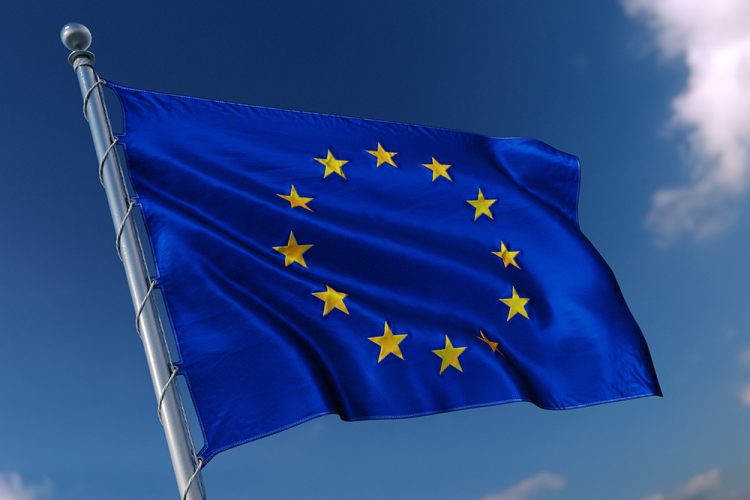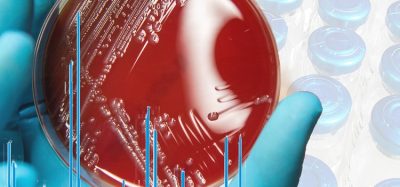The trials and tribulations of the medical devices and IVD regulations
Posted: 26 August 2020 | Paul Ranson (Morgan Lewis) | No comments yet
This article explores the reasons behind the introduction of the EU Medical Device (MDR) and In Vitro Diagnostic Devices (IVDR) regulations, the problems that beset them and how COVID-19 finally persuaded the European Commission that a further year’s preparation time for full application of the regulations was necessary.


While medicines have been regulated since the thalidomide tragedy in the 1960s, the formal regulation of devices in Europe only began in the mid-1990s. With no harmonised EU legislation in place, member states adopted their own processes. In the UK, for instance, regulation comprised a Department of Health defect and adverse incident reporting system supported by compliance inspections under the Manufacturers Registration Scheme (MRS).
The various national requirements were gradually replaced by EU regimes: the Active Implantable Medical Devices (AIMD), fully in force in 1993; the general Medical Devices Directive (MDD) in 1998; and the In Vitro Diagnostics Directive (IVDD) in 2000. As directives, they had to be implemented into national EU member state laws.


The three directives are based on the European Commission (EC)’s “New Approach”, which is designed to protect patients and allow free movement of goods by requiring that only products fulfilling the essential requirements may be placed on the market, commonly by reference to harmonised standards and with compliance demonstrated by the affixation of a CE-mark.
Under the MDD, medical devices are graded accordingly to risk assessment, with the level of data required and control dependent on the categorisation. For class I (low risk) medical devices, the manufacturer may self-certify subject to subsequent competent authority audit. For higher risk, class II and III medical devices, certification is granted by notified or conformity assessment bodies. These notified bodies are private organisations designated by a national competent authority to assess whether manufacturers and their medical devices meet the requirements set out in legislation and whose activities are overseen by those competent authorities. The competent authorities are also responsible for approval of clinical investigations and post-marketing vigilance schemes for manufacturers and users.
PIP and calls for reform
The MDD and IVDD regimes are substantially looser than medicines controls, with pre-marketing trials less common or rigorous, typically involving fewer patients, and regulatory authority controls focused more on post-market aspects. There were also diverging national interpretations of the current directives through the local implementing legislation. However, this lighter approach was called into question by concerns over the release of potentially toxic metals into the body from metal‑on-metal hip implants and, even more dramatically, in light of the fraudulent use of non-medical grade silicone in breast implants manufactured by Poly Implant Prothèse (PIP), which was uncovered in 2010. The PIP scandal impacted nearly 400,000 patients in 55 countries and led to the so-called ‘PIP Action Plan’, which was launched in 2012. The plan focused on four key areas: the functioning of notified bodies, market surveillance, co-ordination of vigilance and communication and transparency.
The process and timelines have been fraught and culminated in the MDR implementation being delayed for a year”
PIP primarily highlighted the weaknesses in vigilance within the system and the plan tightened these up by recommending that notified bodies carry out unannounced audits of manufacturers. Moreover, it proposed that those notified bodies should be scrutinised more closely by their national competent authorities and counselled improved co‑ordination between EU member states.
The regulation – stresses and eventual postponement
A long-term solution required a thorough revision of the legal framework and in April 2017, the two new EU regulations concerning medical devices and IVDs were adopted: EU 2017/745 (the MDR) and EU 2017/746 (the IVDR), respectively. These regulations, which are directly applicable in member states’ laws and hence require no national implementation, were intended to replace the directives from May this year for medical devices and May 2022 for IVDs.
In summary, the introduction of the MDR will mean:
- stricter pre-market control of high-risk devices at an EU level
- the inclusion of certain aesthetic products
- a new risk classification system for diagnostic medical devices
- improved transparency through the EU database of medical devices (EUDAMED)
- device traceability through the supply chain ‘economic operators’
- a requirement for an ‘implant card’ for patients with implanted medical devices
- stricter rules on clinical data and clinical studies on devices
- manufacturers to collect data about the real-life use of their devices
- improved co-ordination between EU member states.
However, for several reasons, including those discussed below, the process and timelines have been fraught and culminated in the MDR implementation being delayed for a year.
Here, we consider the immediate cause for the postponement and associated background delays and stresses.
Notified body shortages


As part of the PIP plan, the Commission Implementing Regulation (EU) 920/2013 of 2013 clarified the criteria to be met by notified bodies, with member states being required to reassess the capabilities of their notified bodies. In accordance with the PIP plan, by May 2014, voluntary joint audits of notified bodies under the directives by teams involving auditors from several member states and the EC identified problems in the way notified bodies operated. When assessment became mandatory in 2017, by virtue of Regulation 920/2013, there were 78 notified bodies for the various categories of medical devices. However, that number was reduced to 55 by the end of 2019 through surrenders of designations and audit failures, with others having their scope for designation reduced.
A further factor was Brexit. After the transition period, CE-marks granted by UK notified bodies will no longer be valid. It is reported (by BSI, a notified body previously based in the UK) that some 45 percent of all medical devices CE-marked in Europe, including 70 percent of non-EU based manufacturers, used UK notified body services. In addition, several notified bodies based in the UK withdrew their medical device services because of Brexit (for example, Lloyds Register – LRQA – in June last year). While BSI has now also registered in the Netherlands, these developments further exacerbated notified body shortage.
However, the prime reason for the current shortage is the need for notified bodies wishing to be granted CE-certificates under the regulations to be re-designated thereunder. In June 2019, the EC stated that it expected a total of 20 to be designated by the end of 2020, but to date there are still only 15. The audit and designation of a notified body is a long and complicated process with joint assessment teams, including representatives of other member states, which takes at least 12 months. Moreover, the role of notified bodies has evolved; under the regulations they will have more of an enforcement role, evaluating all medical devices above class I and IVDs above class A (the lowest risk IVD category). The Medical Device Coordination Group (MDCG; see below) could only say in March 2020: “It can be reasonably estimated that the number of designated notified bodies will significantly increase in 2020.”
Several notified bodies based in the UK withdrew their medical device services because of Brexit ”
One problem is the increase in hitherto class 1 MDs and class A IVDs that are to be up‑classified and hence will now require notified body involvement in their certification. Given the likely workload, the EU had to resort to a (second) corrigendum to the MDR. Under Article 120(3) of the MDR, a device covered by a certificate that was issued in accordance with Directive 90/385/ EEC or Directive 93/42/EEC may be placed on the market or put into service up to 26 May 2024, provided there are “no significant changes” in the design and intended purpose of the legacy device. In December last year, that four-year ‘grace period’ was extended to cover manufacturers of class I medical devices up-classified by the EU MDR to class II or III (therefore requiring assessment by a notified body for the first time).As a result of the notified body shortage, the review and certification processing times for new medical devices have increased considerably, because the remaining notified bodies are swamped. Notably, start-ups have had great difficulties in finding a notified body that still accepts new clients.
Guidance delays
The MDCG is a group of members and experts from all EU member states, certain third-party countries and industry associations. The MDCG’s role is to assist the EC in the implementation of the regulations. One of its primary tasks is to guide the industry and notified bodies on how to understand and implement the requirements of the regulations by developing non-binding guidance documents or guidance notes. However, many of the key areas for which the industry has sought guidance since 2017 have not been addressed; therefore, it has been suggested that MDCG likely placed more focus on guidance documents for the notified bodies rather than manufacturers at first, in the (arguably unrealised) hope that it would speed up the designation of new notified bodies under the MDR. To date, only around half of the 80 or so anticipated MDCG guidance notes have been published and it was only in March 2020 that the MDCG outlined its plan for actions considered essential for a medical device manufacturer to have an operational system under MDR in place by 26 May 2020.


In March 2020, guidance notes on several of these critical issues appeared, seemingly in the proverbial nick of time. These included guidance on the application of the transitional period, including interpretation of “significant changes” in the context of the transitional arrangements and Article 120 (3).
An area where industry questions were left unanswered was in relation to the clinical investigation and evaluation requirements and the process for application of the clinical evaluation consultation. This resulted in medical device manufacturers being forced to develop clinical strategies relying solely on the text of the MDR. Except for guidance issued last year on the summary of safety and clinical performance (primarily applicable to implantable and class III medical devices only) and in March this year on the evaluation of medical device software, clinical investigation and evidence guidance is not yet available. Answers and guidance are eagerly awaited on critical topics such as clinical evidence requirements for legacy products, pre-marketing clinical evidence, post-market clinical follow-up and the place of equivalence in clinical evaluation.
EUDAMED delay
On 30 October 2019, the EC made the official announcement that the implementation of EUDAMED was to be delayed by two years. EUDAMED will be a web-based portal acting as a central repository for exchanging information, which aims to help European authorities conduct market surveillance on medical devices (and IVDs) through information exchange. EUDAMED will act as a central repository for information exchange between national competent authorities and the Commission.
Given the ongoing problems, the extra year will need to be well used to resolve the ongoing issues under the MDR and prepare for the IVDR”
When the EUDAMED implementation delay was announced, the EC stated that the date of application of the MDR remains May 2020. A joint industry statement pointed out that EUDAMED was ‘at the heart’ of the MDR. Given that so many aspects of the MDR require a functioning EUDAMED (such as unique device identifiers for devices and single registration numbers for manufacturers), the industry sought a “clear overview of the requirements that are applicable despite the fact that EUDAMED is delayed”.
The Commission explained the delay on the basis that “it will only be possible to make EUDAMED operational once the entire system and its different modules have achieved full functionality and have been subject to an independent audit”. Therefore, EUDAMED, when launched, will cover both medical devices and IVDs at the original date foreseen for the introduction of the IVDD (ie, May 2022). The fact that not all the modules are ready in time may be due in part to the move of devices last year from the control of different directorate generals within the EC – namely DG GROW (responsible for ‘Internal Market, Industry, Entrepreneurship and SMEs’) to DG SANTE (responsible for ‘Health and Food Safety’).
The Swiss question and implications for the UK
Switzerland and the EU currently have a mutual recognition agreement (MRA) under which each accepts products produced by manufacturers based in the other that meet local technical regulations. This covers the current directives, but considering the forthcoming EU regulatory changes, Switzerland is revising its own laws. Switzerland and the EU must therefore enter a revised MRA to avoid trade barriers. From the time the MDR applies, without an MRA covering the new regulations, Switzerland becomes a “third country” from the EU’s perspective. There have been problems between the two over the overarching institutional framework agreement (IFA) resulting from Switzerland’s current free movement of people position and the Commission seems to have adopted the position that the MRA for the MDR can only be signed if there is an agreement on the IFA.
To date, only around half of the 80 or so anticipated MDCG guidance notes have been published”
The outcome of this could constrain the EU’s ability to negotiate MRAs in the sector with other non-EU countries, such as Turkey and the UK (after the Brexit transition period). In addition, under the World Trade Organisation (WTO)’s most‑favoured-nation principle, whether Switzerland’s device regime is recognised or not the EU would be required to afford every other WTO member the same treatment as any of its trading partners with equivalent regulatory standards as Switzerland.
COVID-19 – sudden pragmatism?
The current COVID-19 global health crisis has put additional strain on the already overburdened MedTech industry, governments and regulators. It therefore came as a considerable relief for the industry and other stakeholders that the Commission adopted a proposal on 3 April 2020 (the Proposal) to postpone the application date of most provisions of the MDR until 26 May 2021. The European Parliament duly adopted the Proposal on 17 April 2020 by urgent procedure with 693 votes to one. The proposal was subsequently approved by the member states and published in the Official Journal.


The Proposal gives the industry an additional year to ensure compliance with the MDR requirements and obtain MDD certificates from their notified bodies to benefit from the transitional provisions. The Proposal also amends Article 59 of the MDR. Article 59 (1) allows individual member states to authorise medical devices without a CE mark in their respective territories if there is a public health, patient safety or health interest. Under a revised Article 59 (3), the Commission can, in “exceptional circumstances” and for a limited period of time, extend the member states decision to the whole EU market. These powers would also apply to decisions by the member states under the equivalent provisions to Article 59 (3) of the MDR in the MDD (Article 11 (13)) prior to the Proposal’s adoption. Several EU member states have already adopted emergency national exemptions from CE‑mark requirements due to COVID-19. For instance, in the UK the Government invoked Regulation 12 (5) of the UK Medical Devices Regulations 2002 (implementing the MDD and the AIMD) in the case of medical devices and Regulation 39 (5) in the case of IVDs. These state that normal regulatory procedures may be disapplied for a specified period in the interests of the protection of health, allowing the placing on the market or putting into service of a particular device or class of devices without a CE marking.
IVD regulation – the next logjam?
With the IVDR not due to come into effect until May 2022, and while it has been announced that EUDAMED will come into effect for both devices and IVDs at the same time, the sense of urgency in relation to the IVDR is not so evident. To date, the EC has not published a proposal to defer the application of certain provisions of the EU IVDR nor amended its Article 54 which is similar to Article 59 of the MDR. However, many of the same issues apply with the IVDR as with the MDD. It is hoped that the notified body capacity substantially increases in light of the large number of IVDs being up-classified – in very broad terms the ratio of IVDs for which notified body involvement is required as opposed to those that do not will reverse from 20:80 to 80:20. In addition, the second corrigendum discussed above does not cover up-classified class A IVDs. Furthermore, looking at the paucity on IVDR guidance and progress from the MDCG, it is evident that efforts are being concentrated on the MDR.
Summary
Despite the issues described above and notwithstanding the EUDAMED delay, the EC’s response, until COVID-19, had been that there were no plans to delay implementation. While acknowledging that the May 2020 deadline for the implementation of the MDR would be a “significant challenge,” the European Commissioner for Health and Food Safety, Vytenis Andriukaitis, said that the industry and government “are on course to meet it” and that current deadline is “realistic and achievable”.
The industry and many commentators did not necessarily share that optimism and it took the current public health crisis to change the Commission’s mind. However, given the ongoing problems, the extra year will need to be well used to resolve the ongoing issues under the MDR and prepare for the IVDR.
About the author
Paul Ranson is a consultant at the global law firm, Morgan Lewis. His main focus is the regulatory and commercial needs of the pharmaceutical, biotechnology and medical devices sectors.
Issue
Related topics
Industry Insight, Medical Devices, Regulation & Legislation, Technology
Related organisations
The European Commission (EC), The Medical Device Coordination Group (MDCG), World Trade Organisation (WTO)









